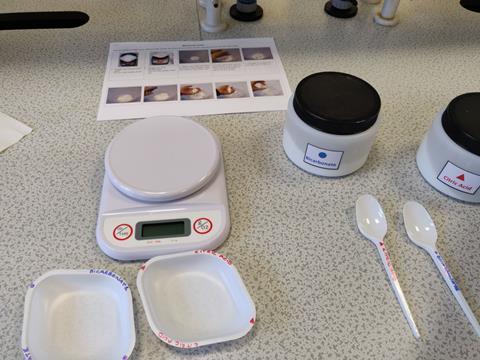Making experiments accessible for all pupils is easy when you’re prepared
Students with SEND have the same right to access the curriculum as other students, but many teachers lack the confidence to make this happen. Meeting their needs can be as easy as making small tweaks and adjustments to the way you work or building in some simple strategies.
The first thing to consider when planning for students with SEND is to know them and to know their needs. Do they have an EHCP (education, health and care plan)? Is there a summary or an education plan? Perhaps they have a pen portrait which gives you useful information about their needs (and possibly triggers or things to avoid)? Have you checked with the SENDCO (special educational needs and disabilities coordinator)? Are these students supported regularly by a teaching assistant who understands their needs?

Practical work is a powerful tool for those with SEND as it helps exemplify concepts and helps students understand how science experiments work (the scientific method). In my experience, students often also remember the content covered in practical work better than many theory-based lessons. I can still remember my chemistry teacher in year 8 demonstrating the reduction of copper oxide, 35 years later. Practical work can also help students develop problem-solving and thinking skills, strengthen independence skills and prepare them to work as a functional member of a team.
Consider the purposes of practical work as evidenced by the Gatsby Good practical science report. It shouldn’t be used as a filler or ‘babysitting’ activity.
Key skills
Many students who have additional needs also have poor executive function skills. Simply put, executive function skills are needed to get things done. They include your working memory, your ability to think about something in different ways and your ability to focus. These are key skills for practical work – to ensure that learning happens and that the practical is safe. By focusing on executive function skills you can support students with a range of needs with one set of strategies.
Strategies that support executive function skills in a practical environment include:
- Stepped instructions (such as integrated instructions).
- Visual organisers/schedules.
- Timers or stopwatches (for time management).
- Checklists or to-do lists.
- Selective grouping of students.
- Highlighting key pieces of text.
- Clear and established routines.
Of course, these strategies will benefit other students as well.
Students with autism may have difficulties with communication, social interactions, sensory difficulties and managing change. Put these together and you’re describing a practical science lesson. Autistic students benefit from structure (routines, equipment in a set place, clear stepped instructions). Use words like now, next, finally so it is clear what will be happening. Warn of changes – especially where there might be strong smells or loud noises. I taught a student who always asked me: ‘will it bang?’ He didn’t mind experiments that made a noise (he loved popping hydrogen), but he wanted to be prepared. Allow thinking/processing time – don’t expect an immediate response or answer.
Your expectations should be high but realistic
Students with social, emotional and mental health needs can be risk takers, and may have a low attention span. Chunk or step instructions to break tasks down. Be consistent and remember to use plenty of praise when things go well and make sure you have established those routines.
Roles can also help with practical work, to make sure that all students are pulling their weight. It also helps spread the workload evenly across students, avoiding gender stereotypes. I’ve had students reading thermometers, Bunsen monitors, scribes etc. Give students roles when setting up and clearing away (I’ve used jobs like glassware supervisor, floor checker, bench monitor, to help with clearing up). Be sure to always use student names when issuing commands.
Making science accessible
ICT has amazing potential to make science accessible. You can use software to create stepped instructions with apparatus diagrams (using commercial software like Science Diagrams from Focus software or the free Chemix website). A spreadsheet can be a powerful tool – you can collect a whole class set of results in minutes and use this to plot graphs. I’ve collected rates of reaction data in this way and students can quickly see the trends on the screen. Conditional formatting can be used to highlight increases or decreases in results tables to help students who might struggle to read large numbers or those with decimal places.
Try to link practicals to everyday life (we have the advantage as science teachers that our subject is about making sense of the world around us). Doing this will help with engagement but also application of principles and retention for later on.

As you become more confident you’ll see that similar strategies benefit a range of students. Consider the image right from an inclusive Salters’ Institute festival at the University of Strathclyde.
The instructions are broken down into clear steps (with photographs, although diagrams would be just as helpful). The technician has taken steps to reduce contamination and colour coded the equipment students would use. This worked remarkably well in practice.
Similarly, provide results tables for those who need them (I’m sure we can all think of a student who would spend three-quarters of a lesson producing a table lacking a single pair of parallel lines). Give options or keywords to help students capture results, and use the correct terminology. If you are expecting students to write up the experiment, consider using a structure strip to help them get the sequence right in their books.
My final piece of advice is that your expectations should be high but realistic for these students. Have a can-do attitude and reward success in all lessons.














No comments yet